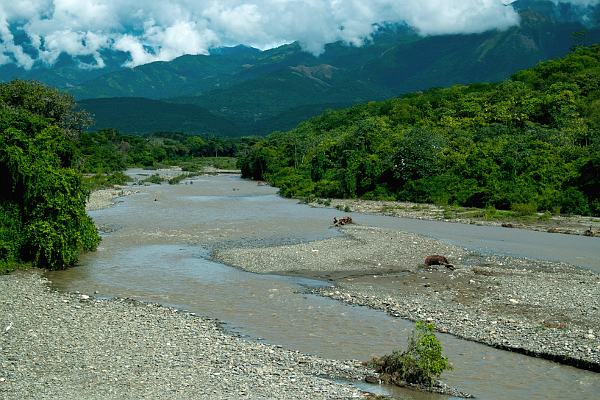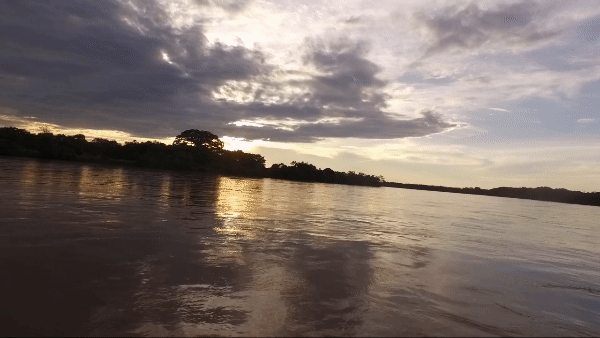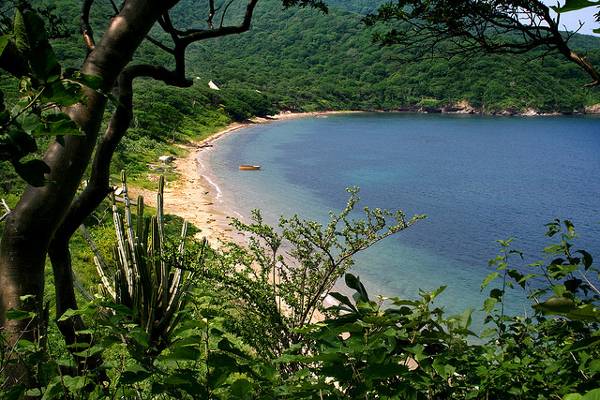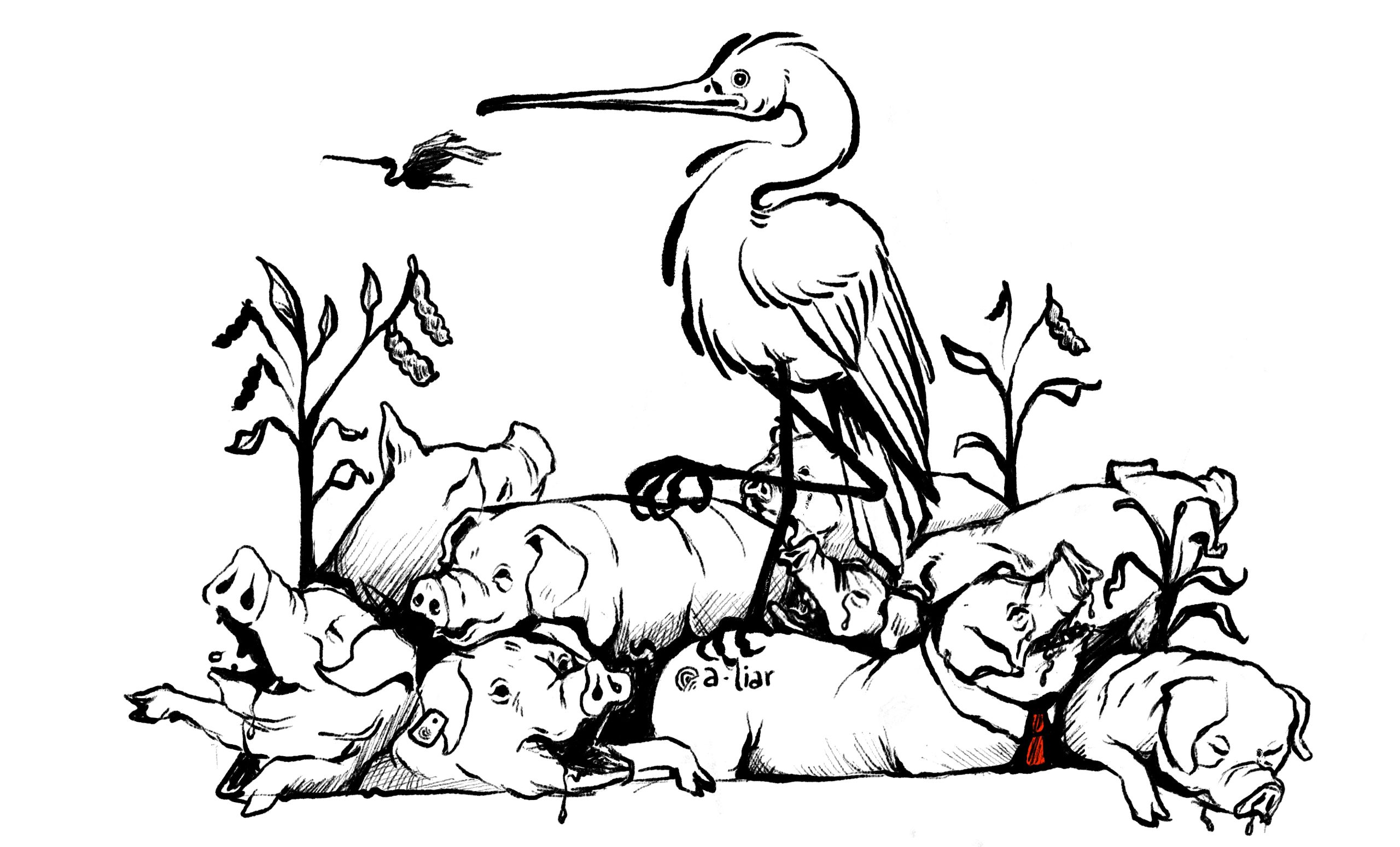
By: Christian Peñuela – January 26th, 2013
Lumbago, silicosis, sleep disorders, work stress, spinal discs herniation, hearing loss, skin cancer, ringworm, extinction of native plant and animal species, along with the deterioration of major rivers in the Colombian northern department of Cesar are progressive and irreversible damages denounced by the mine workers of La Jagua de Ibirico and the 21000 people who live near the world’s fourth largest open air coal mine.
According to the complaints of workers and the inhabitants of the municipality, the transnational company Glencore, which owns the companies Carbones de La Jagua, Consorcio Minero Unido y Carbones del Tesoro, has systematically contaminating the air, water and soil in the region, and deteriorated the health of thousands of people with their poor environmental and labor practices. This would evidence a clear breach of international treaties and national laws that national and transnational mining companies must comply with.
Alarming reports
According to the National Union of Mining and Energy Industry Workers (SINTRAMIENERGÉTICA), the Association of Sick Coal Workers of La Jagua (ASOTRECAJ) and the National Union of Metal Industry Workers (SINTRAIME), there are 108 reported patients in the company United Mining Consortium, 349 in La Jagua Carbon and a still unknown number in Tesoro Carbon, making it difficult to know the total consolidated sick workers of the mine who, mostly, are not unionized. German Albor, the oldest worker in the mine and president of ASOTRECAJ, affirms that «of the 340 workers affiliated with unions, we have 83 who are sick with various diseases, among which the highest rate is back pain».
Since the 1980s, the workers have reported health problems they suffer from. Gustavo Benjumea, secretary of the Joint Committee on Occupational Health (COPASO), has worked at the mine since 1987 and his two and half decades of delivery to the mining megaproject ensures that the black coal dust has affected his lungs and that «they have professionally qualified me [unfit] due to my poor breathing capacity. Like me, there are many colleagues whose lungs are also affected and for whom the spirometry is negative.»
Shifts that generate accidents
Shifts at the mine are extenuating: workers work for 12 continuous hours under extreme conditions, due to the climatic characteristics of this area in the north, with breaks of four days for those in the daytime and three for those at nighttime, with rotations of the day at the end of each break.
Such shifts generate a high risk of accidents due to fatigue of workers and sleep disorders which cause repeated schedule changes. Unionists stated that in 2011 a total of 427 accidents were reported, of which 246 occurred in the daytime shifts and 181 at the night shifts. Regarding contract workers, also called temporary or outsourced workers, 122 accidents are reported both in United Mining Consortium and La Jagua Carbon, which are more serious since they are the ones who have lower incomes and fewer worker guarantees at the mine.
In addition to this, the sleep disorders caused by continuous changes of workers’ shifts produce extreme conditions of work stress related to constant pressure from Glencore to increase at all costs the production of the three companies, which added 6955000 tonnes in 2011, as reported by the transnational to the government. Thus, the Swiss mining company has generalized the practice of harassment against workers, committing acts defined in Law 1010 of 2006 without penalty by compromising the wellbeing and safety of those who give their work for the benefit of that company.
For its part, the union has proposed improving the conditions of rest and multiplying active breaks during working hours, so that the high accident rates can be minimized, but demand the company to stop workplace harassment by managers. In this regard, German Albor mentions that:
«People feel sleepy from the long hours, which is very worrying because we are risking our lives and we have reported this, but the company ignored us and will not change the working hours, besides that there are no plans for industrial safety and occupational health.»
Similarly, Rafael de la Hoz, vice president of SINTRAIME La Jagua, states that the conditions are more precarious:
«To do a job in the field without being properly hydrated and protected is to run the risk of fainting from high temperatures in the mine […] one is leaving his life here so that the family is all right, but really what one gains is survival because honestly we are not payed for the work we do.»
In addition, the environmental conditions of the mine are adverse when it comes to the high temperature and wind that blows through all dry spaces. This also occurs with jobs and workplaces. Gustavo Benjumea is very clear in saying that:
«Everyone is affected depending on the area where you work because working on the pumps produces skin problems, operators of heavy machinery have spinal problems and, in general, there are work related stress problems generated by the long working days which also produce heart damage and hypertension.»
These problems are deteriorating the health of workers.
Deaf, poisoned, injured
Australian transnational Orica Inc., contracted by Glencore, is responsible for the entire operation of explosives at the mine and is also being questioned in Australia and Mexico for their very poor environmental practices. Dozens of accidents and incidents that have caused irreversible damage, and their actions have been deteriorating ecosystems and the health of the inhabitants of the region.
This company, one of the largest in the world in this branch of the mining industry, has a long record of deplorable environmental acts. One of them was the explosion of a truck full of ammonium nitrate in northern Mexico, on September 9th, 2007, which killed 28 people and injured 250 others.
In La Jagua de Ibirico, Orica Inc.’s operations have caused significant environmental impacts and have affected both workers and neighbors of the mine: the continuous explosions without mitigation measures have produced impaired sensory damage and have deteriorated nearby homes. Germán Albor said that «[both] the offices and rooms in villages near La Jagua are cracked and chapped by the high vibration that the two or three daily blastings produce, and that weakens any structure.»
However, not only explosions are causing worker illness. The work with heavy machinery and tools that produce high noise levels cause a good part of the workers to suffer from hearing loss. German Albor said that «before there were some compressors that […] made a loud noise and many colleagues became deaf, forcing them to be relocated. They are irreversible problems and have no cure, since at sometimes earplugs were not used in the mine.”
Moreover, the work of mechanics with electric welding on a large scale, given the size of the machinery used in an open-pit mine, not only exposed the workers to high temperatures while doing maintenance work outdoors but produces significant impacts to their health from the radiation that this technique produces. In addition, toxic gases produced by combustion of welds and explosives, as well as coal dust constantly floating through the air, have also increased respiratory illnesses among the workers and the inhabitants of La Jagua de Ibirico.
As for the work of pumping, necessary to extract the water that is filtered or falls with the rain at the coal face, most of the 36 people working in these jobs have skin problems by contact with water contaminated with a rich sulfur coal, as it occurs in the mining project of La Jagua, chemical residues of explosives and diesel machinery. Having to adjust the pumps’ hoses, workers must spend large amounts of time partially submerged in these liquids, which affects them despite using protective suits provided by the company. Gustavo Benjumea ensures that, with these workers, «the skin is lacerated […] is flaking, despite washing when they get home […] because all that is already impregnated, because the pores absorb all the pollution and nothing can be done about it». In addition to possible cases of skin cancer, union members report common diseases such as dermatitis and infections such as skin fungus.
The complexity in handling heavy machinery has also brought serious consequences to workers. Among the most common diagnoses are spinal discs herniation and back pain. Rafael de la Hoz says that «the equipment that they are doing maintenance on is approximately 7 to 8 meters high, weighs tons and any errors that one makes can cause death.» A disturbing incident happened on June 30th, 2012, when a mining truck Caterpillar 777F, which can weigh 163 tons with a full load and has a height of more than 5 meters, rolled about 32 meters down the garbage dump of Santa Fe, causing multiple injuries to the truck operator.
Who protects the nature and the people of La Jagua de Ibirico?
The people of the area near the mine ensure that in the territories where the mineral is found, there existed different species of monkeys, birds, fish and vegetation in the early eighties. However, as a product of coal mining, species have migrated, have decreased their population or have disappeared from these ecosystems. It is even said that rivers no longer have fish and that companies prohibit communities from artisan fishing activities, which persisted throughout the region before the opening of the mining project of La Jagua.
In the mine there is no proper treatment of wastewater, so that industrial waste pollutes the tributaries of the region. Despite the many public commitments from Glencore about the construction of a treatment plant, it only built a sedimentation and oxidation lagoon that, being located higher than the mouth of the mine, is no longer used for decontamination. According to SINTRAMIENERGETICA, the river Tocuy receives all the water that, by filtration or rain, falls on the mine, and all toxic substances produced there.
A similar phenomenon happens with the huge mountain of rubble and industrial waste that Glencore has created on the grounds of Tesoro Carbon: they do not have management plans for this waste and inert soil deposited there, no abandoned wells are refilled, nor have plans been made to repair the environmental damage caused by nearly three decades of open-pit mining nor have appropriate mitigation works been introduced so that farmers in the surrounding area are not affected by the activity of the mine.
Additionally, reliable proposals have not been presented for the recovery of ecosystems of the region, then, as is known, on lands where there has been open-pit mining it is impossible for them to recover their fertility, which not only affects exploited areas but the entire region, since the transnational company plans to further expand the mining project. According to complaints from farmers in the region, they have increased pressures for farmers in the area surrounding the mine to sell their properties at prices fixed by the subsidiaries of Glencore, especially by placing debris and inert materials next to the enclosures of their plots, affecting their crops, impairing the health of their families and denying them their livelihoods.
According to Álvaro Pardo, director of the NGO Colombia Midpoint and researcher of environmental issues in the Cesar department:
«About 50% of the department is owned and with the requests to be resolved before the Colombian Institute of Geology and Mining (INGEOMINAS) between 70% and 80% of the department will be easily converted into coal mining […] 14% of the ecosystems of the department have been affected by the mining sector and 71% of mining applications that lie in INGEOMINAS would affect another 85%.»
Thus, the communities and the nature in the Cesar department are unprotected from the energy mining locomotive that also promotes the government of Juan Manuel Santos. According to union estimates, between 70% and 80% of the inhabitants of the town of La Jagua de Ibirico have respiratory and lung problems from the circulating air contaminated during the day and night. It is a bleak picture according to Gustavo Benjumea, who says that:
«Even at night you can see the pollution generated by the mine. It is a problem for both those who are in the mine and those who are outside, in the village, where even children are growing up with these lung problems and are dying from them, and it’s very sad.»
_________
* Translated by: Liesl Drew.
Si encuentras un error, selecciónalo y presiona Shift + Enter o Haz clic aquí. para informarnos.



